
The effort you put into tomato growing over the season – planting, feeding, mulching, watering – all lead up to one moment: picking your first tomato.
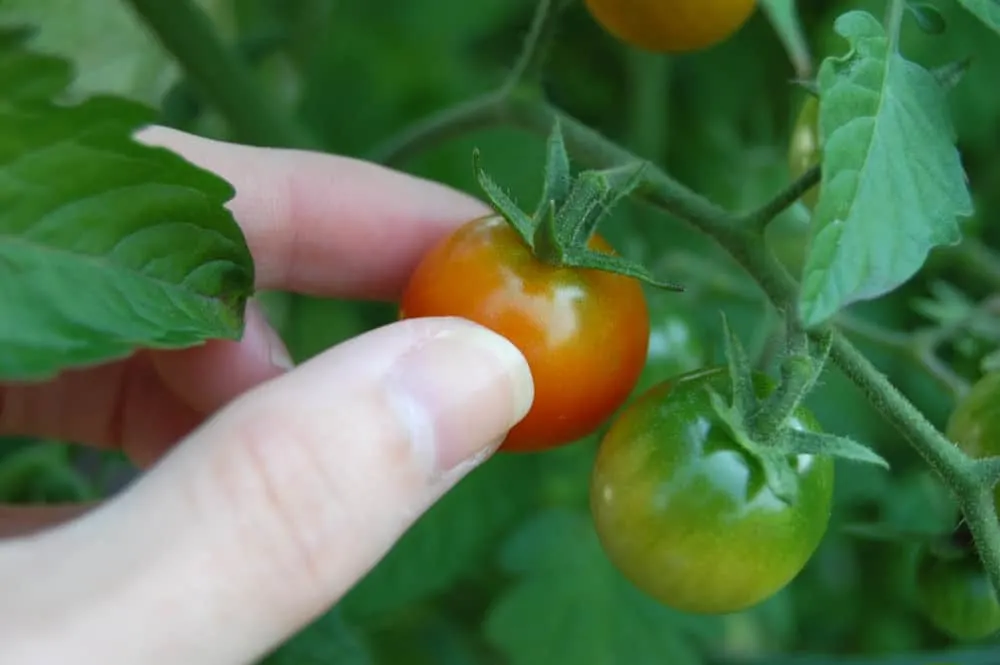
When you see the first green fruits form and wait for them to change color, the anticipation is almost unbearable. So, you wait. And wait. And wait some more. It seems like your tomatoes will never ripen.
What’s gone wrong?
There are a few reasons why tomatoes fail to ripen and most of them are factors out of our control. But that doesn’t mean we can’t try to help them along with some gardening tricks of the trade.
These four reasons are the most likely causes of your tomato ripening woes. While many of them aren’t immediately fixable and will take some patience to resolve on their own, the four tricks to get tomatoes to ripen faster may help you speed up the process.
Why Do Tomatoes Turn Red?
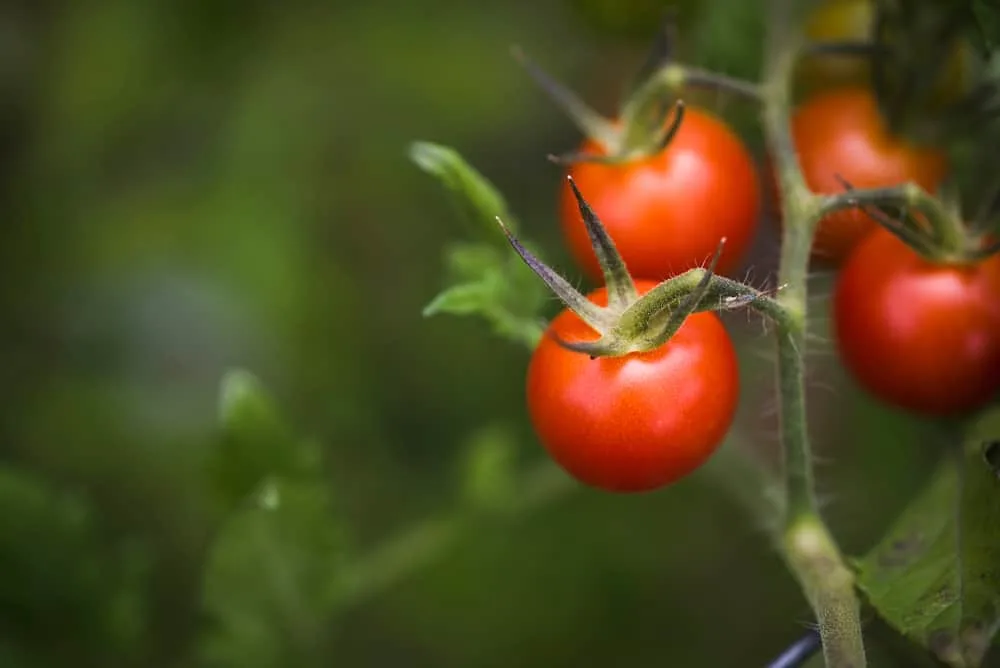
Before we look at why your tomatoes aren’t ripening, it may help to understand how the process works.
Tomatoes start out green due to their high chlorophyll content. Once the tomatoes have fully matured in their green stage, they produce ethylene gas which triggers the ripening process.
The chlorophyll in the fruits begins to dissolve replaced by lycopene (a naturally occurring chemical compound). Lycopene gives the tomato, as well as other red or pink fruits, that quintessential red color.
That being said, as many tomato growers know, not all tomatoes turn red during the ripening process. Depending on the variety you choose, they may ripen to yellow, orange, or purple.
Carotenoids are responsible for differences in color. The main carotenoid in red tomatoes is lycopene, but in yellow tomatoes it is lutein, making the fruits yellow.
Why Aren’t My Tomatoes Ripening?
1. Hot Weather
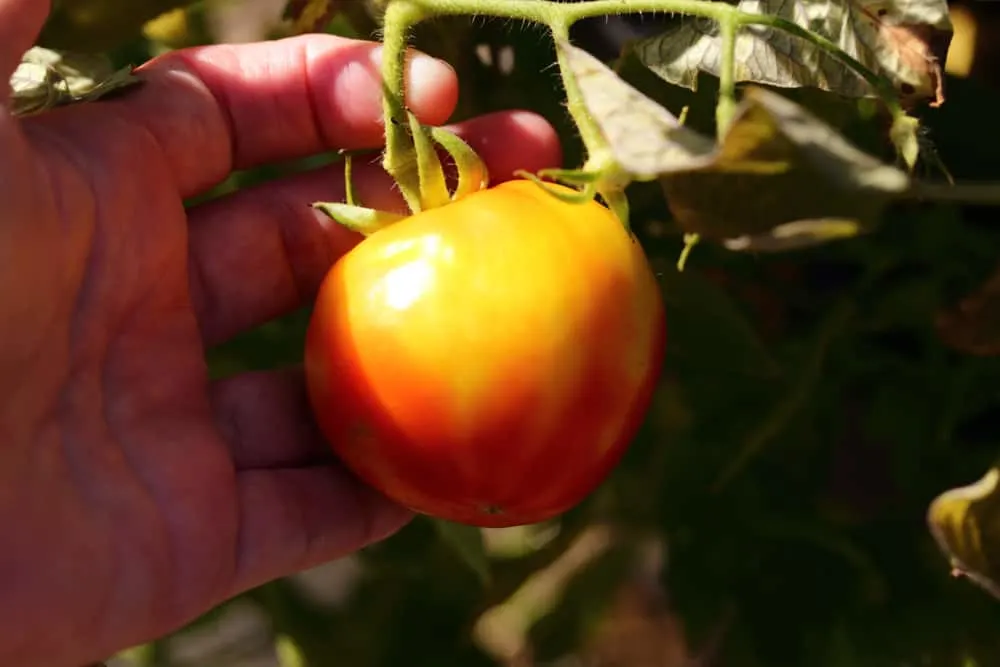
Under sweltering summer temperatures, tomatoes face stress. Although they need warmth to grow and produce fruits, too much heat can cause the plant to move into survival mode.
At high temperatures, the plant stops producing lycopene, the chemical responsible for turning the fruits red. If the outdoor temperatures frequently hit the high 80s or 90s, the ripening process will either slow down, or stop altogether.
Once the heat subsides, the tomatoes will continue the ripening process. You can either wait out the weather, or put measures in place to protect your tomatoes from intense heat. This will mitigate ripening problems and ensure your plants ripen on time every season.
2. Cold Weather
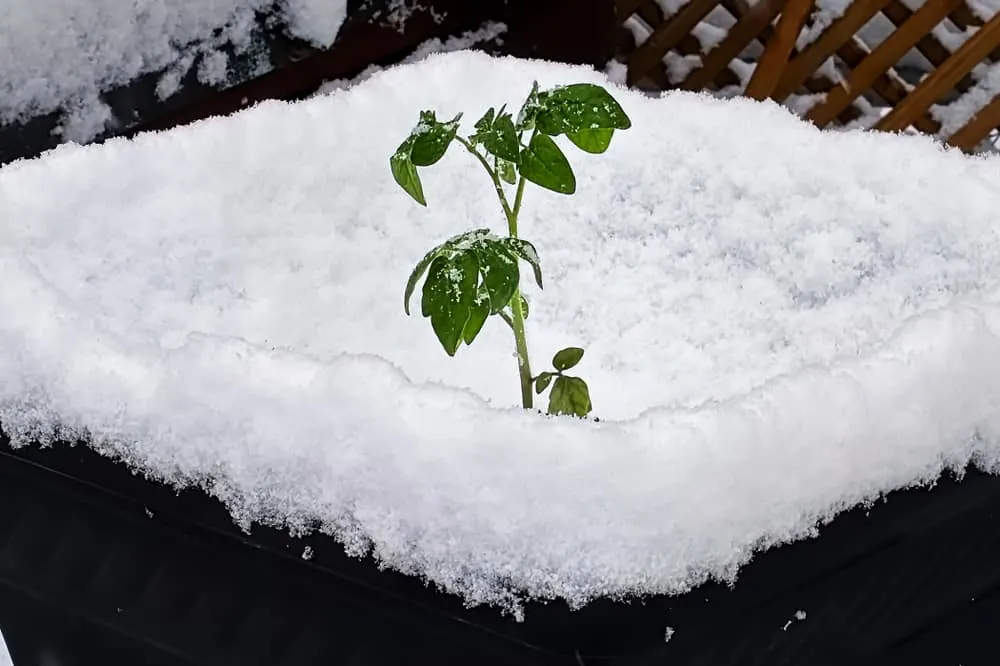
From one extreme to another, cold weather can also halt the ripening process. A temperature drop signals the end of the season for tomato plants. Unfortunately, when you’re still in the middle of the season, there’s no way to convince the tomatoes to keep growing.
A couple of abnormally cold days won’t have much of an impact, but prolonged cold spells where temperatures remain under 60F will stop the fruits from ripening, and stop the plant from growing.
As with extreme heat, you can choose to wait out the weather and hope the problem resolves. However, if the problem lasts longer than two weeks, it’s best to pull what mature tomatoes remain on the plant to let them ripen indoors.
3. End of Season
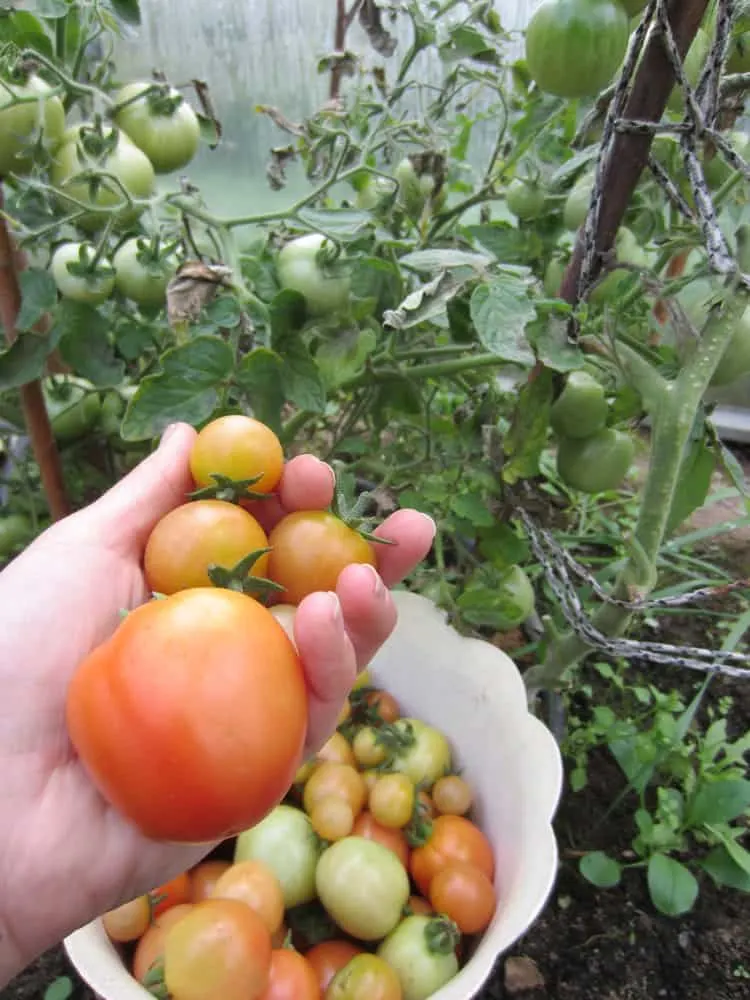
This cause goes hand in hand with cold weather. At the end of the season, when temperatures begin to drop, the plant stops growing and producing fruits. The fruits already on the vine also stop ripening, no matter which stage of growth they are in.
Luckily, these fruits aren’t a lost cause. Pick any fruits that have reached the mature green stage, and they will still ripen indoors under the right conditions.
4. Variety
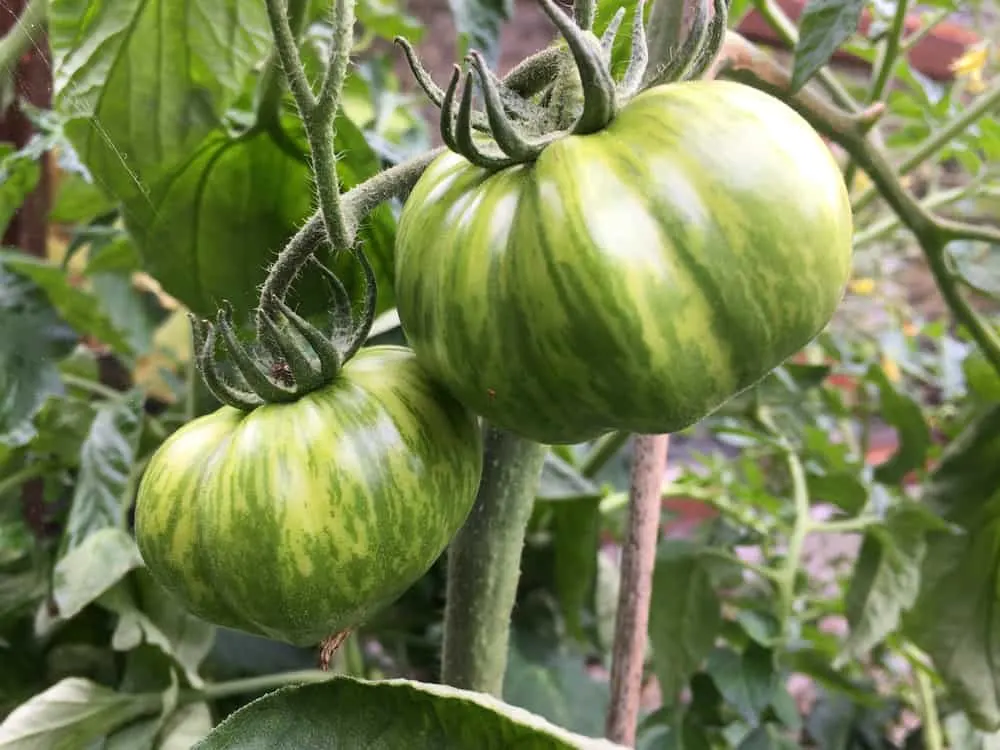
No two tomato varieties are made equal. There are hundreds of options to choose from, and each comes with its own ripening time.
As a general rule, cherry tomatoes ripen faster than the larger varieties thanks to the smaller fruits. But there are varieties bred to ripen quickly (Early Girl is an example), while others may take much longer to reach prime picking stage.
The seed packet of your variety should have information on ripening time. Mark down this date after planting so you’re sure of when your tomatoes should be ready for picking. That way, you’ll know whether you’re facing a ripening problem, or if you just need to wait a little longer.
Similarly, there are a number of green tomato varieties, such as Green Zebra, that are designed to be eaten green. No matter how long you wait, these tomatoes will never appear to ripen but will be just as delicious when eaten green.
How To Get Tomatoes To Ripen Faster
Trim New Growth
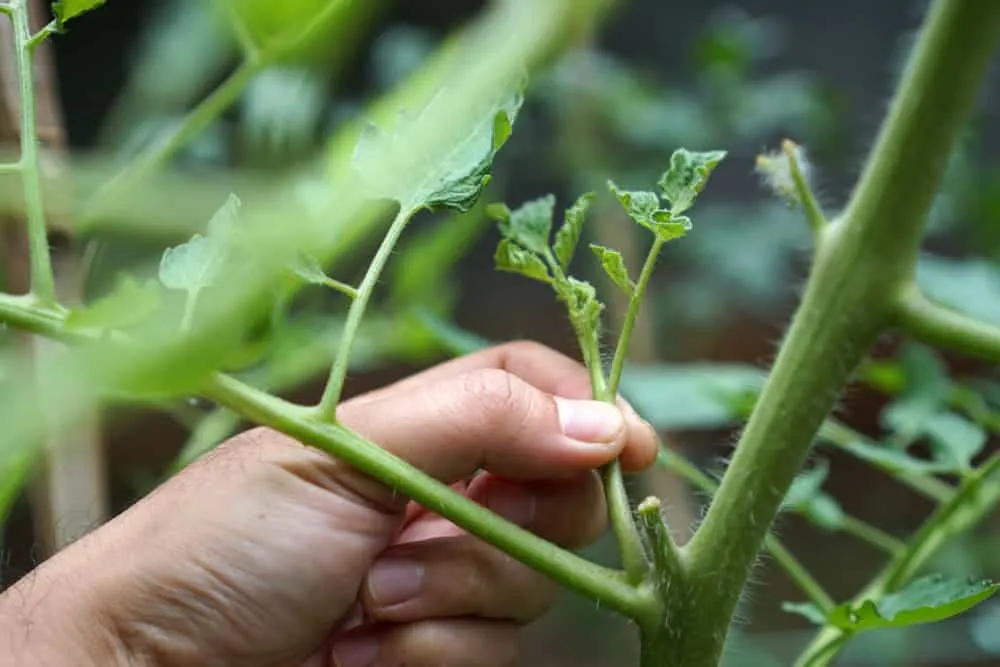
If patience is not an option and you need your tomatoes ripe ASAP, trimming new growth (especially those suckers or side-shoots) may help speed up the process.
Plants only have a certain amount of energy, which they prioritize according to what the plant needs. If there are new branches or early fruits, the plant will focus most of its attention on those areas for quick results. The plants won’t understand your time crunch and are unlikely to see ripening as a main priority. By trimming any new stems or leaves, you’ll direct that energy toward the fruit ripening process.
As this trick focuses all the attention of the plant on the fruits, it is best attempted toward the end of the season when no new growth is needed.
Protect Plants From Extreme Heat Or Cold
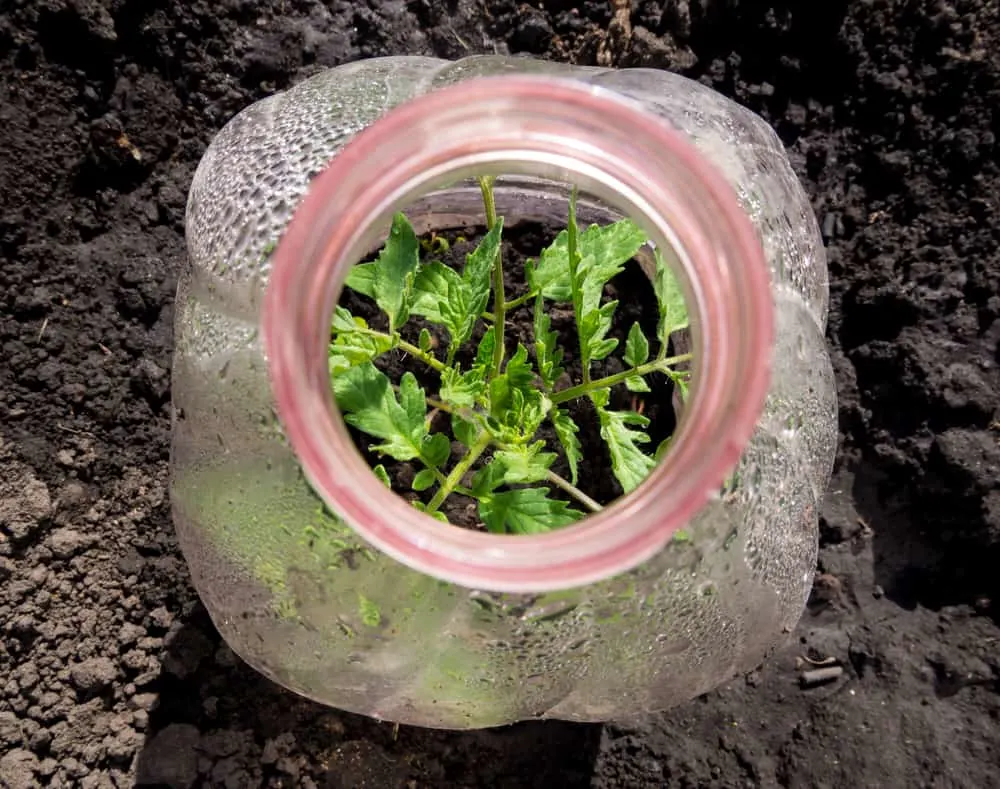
As you can see from the causes mentioned, weather plays a big part in tomato ripening. However, you can lessen those effects by providing the optimal temperature for your plants (between 65F and 75F).
If temperatures are above the ideal range for ripening, protect the plants from the heat with a shade cloth, mulch, and regular watering. If they are below the ideal range, cover the plants with protective fabric or bring them indoors if growing in containers.
When temperatures are firmly in either one of the extremes, these measures may not resolve your problem. But it will certainly lessen the potential damage, not only in ripening, but in the overall health of your plants.
Remove A Few Leaves
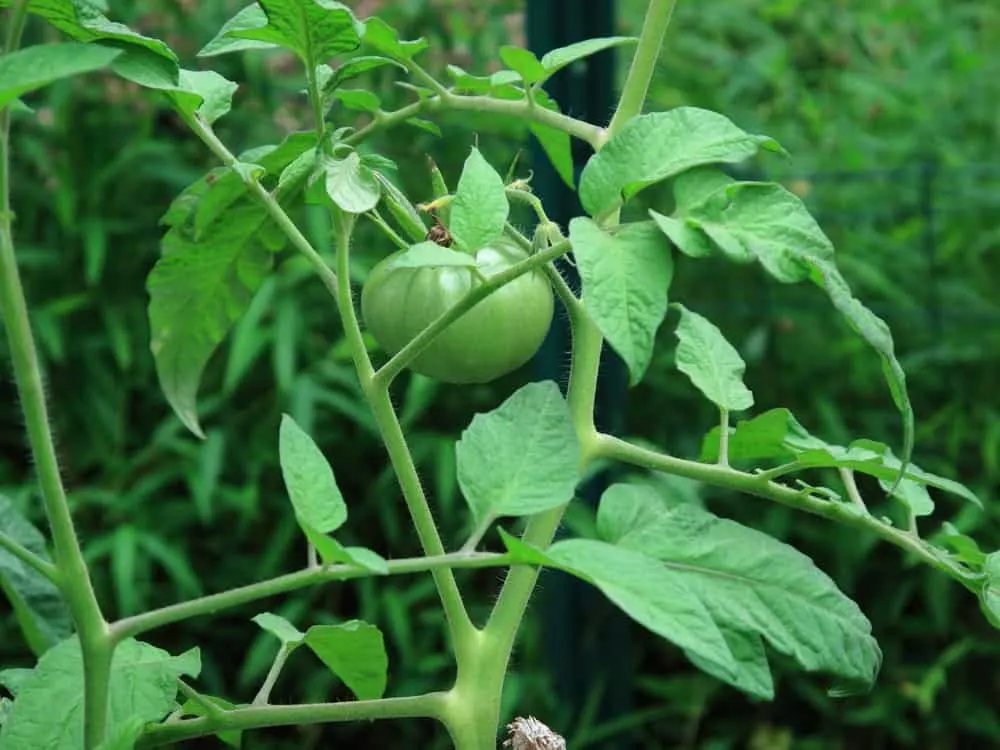
This may be a controversial suggestion, but it is worth a go as a last resort. Many gardeners argue against removing any leaves, as the plant needs them to make energy and protect the fruits from scalding.
However, if you’re nearing the end of the season and have a mountain of green tomatoes, it may be worth removing some of the leaves. The same principle applies here as with new growth – it directs the energy of the plant towards ripening rather than leaf upkeep.
This trick requires an exceptionally light hand. Never remove all the leaves of the plant; just a few will do the trick. Start by removing any leaves that are damaged, leaving all healthy leaves to do their jobs as intended.
Ripen Off The Vine
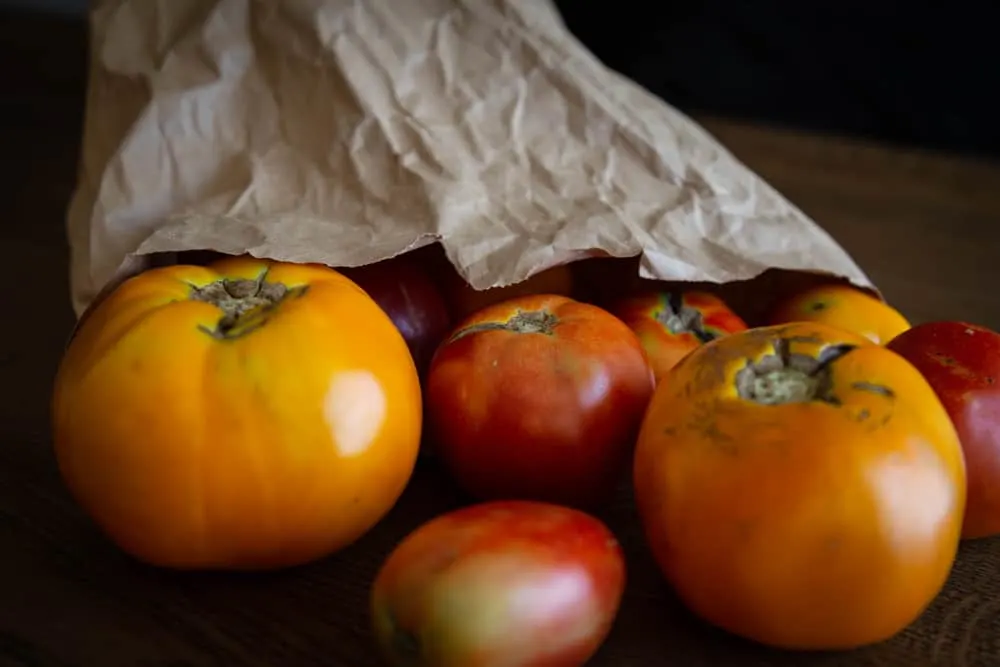
If all else fails, the only remaining option is to remove the matured fruits and leave them to ripen indoors. Only mature green tomatoes are candidates for this process, as they produce the ethylene required for ripening.
If the fruits appear almost ripe, simply leave them on the kitchen counter and they should ripen in a couple of days. Fruits that haven’t begun to change color should be left in a closed paper bag to seal in the ethylene gas, speeding up the ripening process.
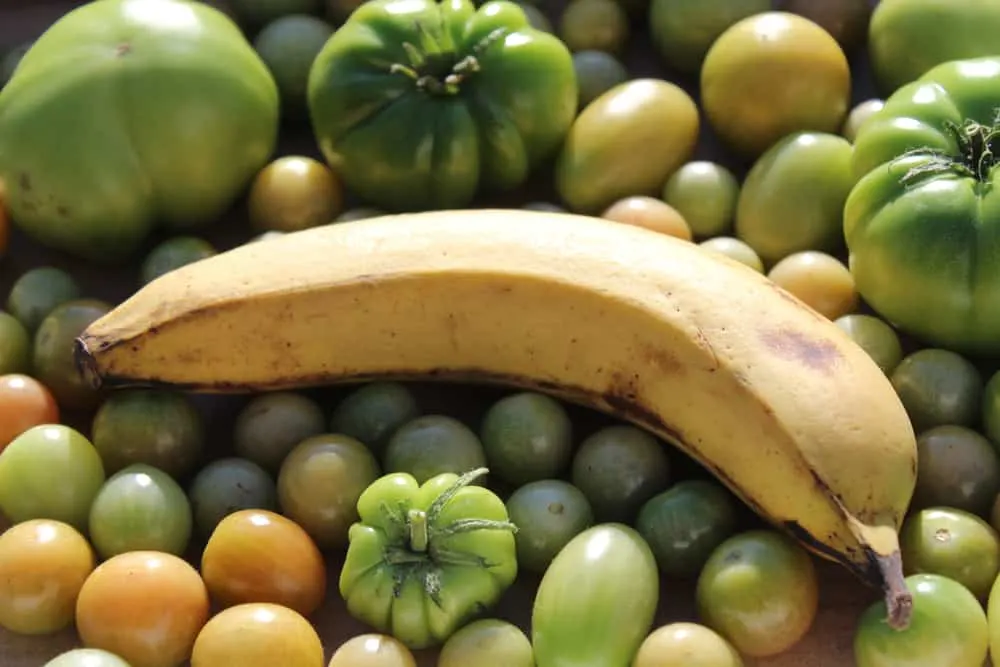
For the extremely impatient, throw a ripe banana into the bag with your tomatoes. They also produce ethylene gas, giving your tomatoes the extra boost they need to finish ripening.
Tomatoes that won’t ripen are a pesky problem, but it doesn’t have to be a problem for long.
Depending on the cause, you can either wait it out or help your plant along the way. You’ll have a pile of red, juicy tomatoes in no time.
